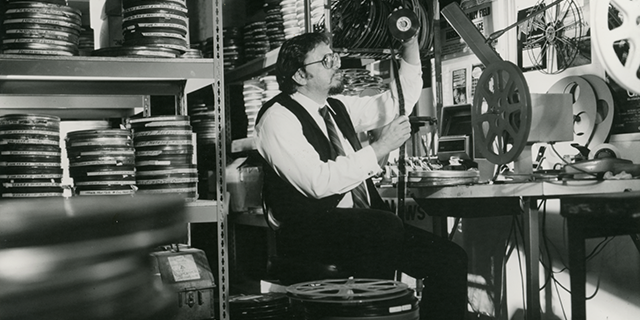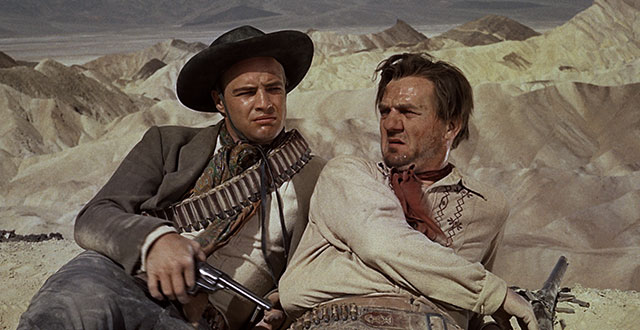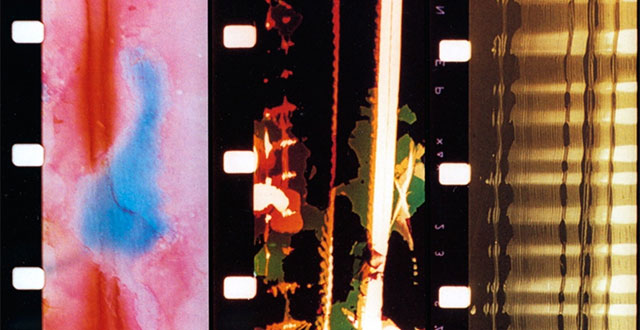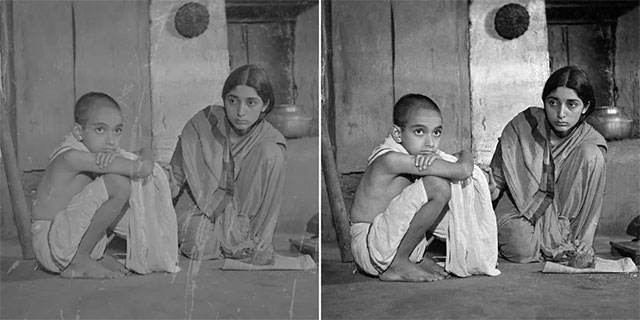News
Robert Rosen, Former UCLA Theater, Film and TV Dean, Dies at 84
Etan Vlessing
Robert “Bob” Rosen, a pioneering film historian, archivist and former dean of the UCLA School of Theater, Film and Television, has died. He was 84.
Rosen died Wednesday, UCLA said without specifying a cause of death. Born in 1940, Rosen was named Dean of the UCLA School of Theater, Film and Television in 1999, a position he held for slightly more than a decade.
Before that, he served as director of archives at UCLA starting in 1975, growing the school’s original film and TV vault into a world-leading collection. That appointment grew out of an invitation to teach one 10-week course at the UCLA Department of Film and Television in 1974.
“I never left. Understanding motion pictures and teaching filmmakers was to become my life’s goal, and over the course of the next four decades, I served as professor, then department chair, and finally for 11 years as dean of the school,” Rosen said during an informal conversation at the 68th International Federation of Film Archives Congress in Beijing in 2012.
“Bob was a transformative figure at UCLA, and his contributions to the field of film and television education, as well as his leadership here at the School of Theater, Film and Television, have left an indelible mark on our community,” UCLA School of Theater, Film and Television Dean Brian Kite said in a statement. “Bob’s impact on the global film community was profound, and his legacy will continue to shape the industry for years to come.”
In 2008, Rosen told the Associated Press that studying classic films helped young filmmakers find new ways to tell stories and discover their own point-of-view. “When you look at films from the past, you see the many different ways that filmmakers solve storytelling problems,” he noted. “And you break with formulas because you realize there are many ways to solve a problem. By looking at the past, you get the courage to find your own voice.”
Rosen also was the founding director of the National Center for Film and Video Preservation at the American Film Institute. He served on the executive committee of the International Federation of Film Archives, as a member of the National Film Preservation Board of the Library of Congress for more than two decades and as a board member of both the Stanford Theatre Foundation and the Geffen Playhouse.
He was the film critic for KCRW National Public Radio for 10 years and a member of the Los Angeles Film Critics Association. He helped launch The Film Foundation and was the founding chair of The Film Foundation’s Archivists Council.
He also received The Film Foundation’s John Huston Award from Martin Scorsese in 2008 for his contributions to film preservation and restoration.
“A titan of the film community, Bob elevated the field of archiving by championing training and advocating for the preservation of moving image media in all forms, from classic Hollywood to independent productions,” May Hong HaDuong, director of the UCLA Film & Television Archive, said. “With advocacy, passion and an indomitable spirit, Bob played a pivotal role in transforming the UCLA Film & Television Archive into the world-class institution it is today.”
From Vault to Screen: The Art of Restoring Universal's Cinematic Legacy
To preserve over 112 years of its cinematic legacy, Universal launched its Restoration Project in 2012 in partnership with The Film Foundation. Together, they have restored more than 149 significant films, ensuring that these timeless classics continue to inspire audiences for generations to come.

For more than 112 years, Universal's film group has been behind some of the most iconic films in cinema. Committed to preserving this rich legacy, Universal launched its Restoration Project in 2012 in partnership with The Film Foundation, a nonprofit organization founded by Martin Scorsese and Steven Spielberg.
We have a duty as a film studio, to make sure that we keep those memories alive for a future generation. We don’t want to see these films deteriorate and the Restoration team has been so important in protecting and restoring these assets.
— Adam Moysey, CFO NBCUniversal Studios Group
NBCUniversal's Film Restoration Process
When choosing which films to restore, NBCUniversal collaborates heavily with The Film Foundation—a non-profit organization founded by Martin Scorsese and Steven Spielberg. The Restoration team has identified many films for restoration and has already restored 149 films of significance to the industry including Spartacus, E.T, Jaws, Schindler's List, Back to the Future, To Kill a Mockingbird, House of Frankenstein and many more. Each year, 10-12 titles are restored - this years ten titles are below:

Once a film has been identified for restoration, the Studio Mastering team does extensive research and analysis of the Universal Picture archive, collaborating with many teams —from the physical vault to the digital vault. These groups create and maintain best practices ensuring that assets are migrated with the latest digital standards and least amount of handling, so they may be utilized again in the future. The title is thoroughly researched with both internal and external subject matter and legal experts consulted, followed by a physical inspection and evaluation.
The NBCUniversal Vaults host the 112 year film collection which includes more than 40 miles of actual shelving space -- including the original cut negative, that ran through the camera when that movie was being filmed. Scanning is the first step of restoration where the editors, colorists and visual effect artists start working on a good scan.
Then digital artists are able to provide services that include dirt and scratch removal, deflickering, stabilization, and grain management. We have tools that have been specifically developed and designed to be able to deal with film damage.


When a project is complete, the restored version of the film is added to NBCUniversal archive and can be submitted to film festivals around the world. 43 of the 149 restoration titles have been screened 227 times over the course of 42 international festivals including but not limited to Festival De Cannes, MoMa, Focal International and more.

NBCUniversal Restoration Spotlight: Sugarland Express
The Sugarland Express (1974) Theatrical Trailer
As the team was researching titles for 2024, they realized that it was the 50-year anniversary of Sugarland Express, Steven Spielberg’s first major studio theatrical release. In this film, the audience really gets to see how Mr. Spielberg was starting to think about filmmaking and see his classic trademarks coming to life.
The Restoration team worked closely with Mr. Spielberg and Amblin for six months to restore Sugarland Express around shot and color correction, stabilization and music. The film took place in rural Texas where the weather can change in an instant - so you have shots that should be taking place right after another with drastic changes in the sky. The restoration team was able to color correct so each shot would then match the appropriate sequence.
The music in the film was an original three track mix, the dialog, music and effects. In working with Amblin, the team was able to perform a new 5.1 remix which gave the movie an all new surround track full of effects, yet maintaining the original feel of the 1974 soundtrack.
At the Tribeca Film Festival in New York, Mr. Spielberg discussed the restoration and the importance of it to him personally. While introducing Sugarland Express at its packed screening, he joked that “You’re the first audience to ever see Sugarland Express in 50 years,” highlighting that this restoration marks a new lease on life for the film. The film marked the first time he worked with producers Richard Zanuk and David Brown, and was the impetus that led him to direct Jaws.
The Value of Restoration
The restoration program protects Universal Pictures 112-year-old film library through digital preservation of picture and audio elements, ensuring these works can be experienced fully by generations of cinemagoers for years to come, regardless of the speed at which the original film will naturally degrade over time.
Avant-Garde Masters Grants Preserve the Work of Four Filmmakers
Early films by Nathaniel Dorsky, as well as works by Tatsu Aoki and Midwestern feminist filmmakers JoAnn Elam and Kathleen Laughlin will be preserved and made accessible through the 2024 Avant-Garde Masters Grants, awarded by The Film Foundation and the National Film Preservation Foundation with funding provided by the Hobson/Lucas Family Foundation.
Four early works by renowned filmmaker Nathaniel Dorsky will be preserved by the Berkeley Art Museum and Pacific Film Archive. Fool’s Spring: Two Personal Gifts (1966-67), a birthday gift exchange between Dorsky and longtime partner and filmmaker Jerome Hiler, will be made available to the public for the first time. Pneuma (1977-83) and Ariel (1983) are experiments with the material and chemical properties of film, yielding vibrant abstractions of energy and color. Drawing on these experiments, Alaya (1976-87) represents a return to the photographic image in its meditation on sand, wind, and light. Stan Brakhage raved “Alaya manages a perfection of ‘musical’ light across a space of time greater in length than would seem possible…and with minimal means of line and tone—little short of a miracle!”
Known primarily for the landmark feminist 16mm films Rape (1975) and Lie Back and Enjoy It (1982), Chicago filmmaker JoAnn Elam (1949-2009) was also extremely dedicated to 8mm filmmaking. Drawn to the format’s ability to intimately capture the nuances of everyday life, Elam asserted in the “Small Gauge Manifesto” (co-written with Chuck Kleinhans) that “Small gauge film is not larger than life, it’s part of life.” Elam’s interest in the artistry of domestic life is evidenced in her “avant-garde home movies”, Garden & Joe (ca. 1980) and Joe Cutting Tree (ca. 1980), featuring her husband engaged in practical labor. Blizzard of '79 (1979) captures the filmmaker’s snow-covered neighborhood after a legendary storm. A Country Mile (ca. 1973) turns a simple walk down a rural, wooded path into a mesmerizing journey, while Memphremagog (ca.1973) is a frenetic travel montage that ends in a warm, familial destination. 7/4/77 (1977) shows friends enjoying a Fourth of July gathering. Chicago Film Archives will preserve these works as part of the JoAnn Elam Collection.
The Walker Art Center will preserve Opening/Closing (1972) by Kathleen Laughlin. Filmed in a single night in a South Minneapolis laundromat, washer and dryer doors open and close in an animated rhythm, enlivening a monotonous and routine task. With a background in visual arts and animation, Laughlin contributed to the flourishing independent filmmaking community in the Twin Cities as a teacher and graphic designer at Film in the Cities, the landmark media arts center.
Chicago Film Society will preserve four early works by celebrated Chicago filmmaker, musician, educator, and arts advocate Tatsu Aoki. Exploring the confluence between filmmaking and musical performance, Aoki employs in-camera tricks, stop-motion animation, pixelization, inverted colors, and superimpositions to dazzling effect. 3725 (1981) playfully portrays domesticity in the filmmaker’s apartment while Dream Works (1983) considers the inner life of a cat. Through overlapping images of cars, lane lines, and light fixtures, Rapturous (1984) turns an ordinary parking garage into a “a mildly hypnotic kaleidoscope” while Harmony (1991) captures the hustle and bustle of Chicago’s famed Loop.
Now in its twenty-first year, the Avant Garde Masters program, created by The Film Foundation and the NFPF, has helped 34 organizations save 234 films significant to the development of the avant-garde in America thanks to the Hobson/Lucas Family Foundation. The grants have preserved works by 91 artists, including Kenneth Anger, Shirley Clarke, Bruce Conner, Joseph Cornell, Oskar Fischinger, Hollis Frampton, Barbara Hammer, Marjorie Keller, George and Mike Kuchar, and Stan VanDerBeek. Click here to learn more about all the films preserved through the Avant-Garde Masters Grants.
Martin Scorsese, George Lucas, Film Heritage Foundation’s Venice-Bowing Indian Classic ‘Ghatashraddha’ Restoration Unpacked (EXCLUSIVE)
Naman Ramachandran
The restored version of Indian auteur Girish Kasaravalli‘s 1977 Kannada-language debut feature “Ghatashraddha” (“The Ritual”) is set to premiere at the Venice Film Festival.
This restoration, a collaboration between Martin Scorsese’s the Film Foundation’s World Cinema Project and Shivendra Singh Dungarpur’s Film Heritage Foundation (FHF), with funding from George Lucas and Mellody Hobson’s Hobson/Lucas Family Foundation, brings the Indian classic back to international audiences 47 years after its initial release.
Based on a novella by U.R. Ananthamurthy, “Ghatashraddha” tells the story of Yamuna, a child widow living in her father’s religious school in southern India. After becoming pregnant by a local teacher, she faces ostracism and undergoes a ritual where her father symbolically breaks an earthen pot, representing her outcast status.
The source element for the restoration is the original camera negative preserved at the National Film Development Corporation-National Film Archive of India. “‘Ghatashraddha’ had always been on Film Heritage Foundation‘s restoration wishlist,” Dungarpur told Variety. “I was aware that the negative was not in great condition and I was concerned that it would deteriorate further if we did not restore the film soon.”
The restoration faced numerous technical challenges. “The original camera negative was affected by mold and was damaged with broken and fragile splices, tears, broken perforations, old tape residues and scratches,” Dungarpur explained. L’Immagine Ritrovata in Bologna tackled the extensive repair work.
“Ghatashraddha” features cinematography by S. Ramachandra and a score by B.V. Karanth. The film stars Meena Kuttappa and Narayana Bhat.
“We involved Girish Kasaravalli right through the process especially with the grading of the black and white film, the subtitling and the sound as the sound design of the film is so layered and nuanced, not to mention the compelling score by the legendary B.V. Karanth,” Dungarpur said.
“I have been working closely with Film Heritage Foundation on the restoration of ‘Ghatashraddha’ for several months now. Shivendra and I have been speaking nearly every day about the grading, the density of the blacks, the sound and the subtitling,” Kasaravalli told Variety. “When we began the process, I knew the original camera negative was not in the best of condition and I was very worried about the sound as there was a disturbing hiss all through the film.”
When the 35mm dupe sound negative proved unsuitable due to distortion issues, the team sourced a 35mm print from the Library of Congress with higher quality audio.
“I was so overwhelmed to see the restored ‘Ghatashraddha’ when Shivendra sent me the final version. It has been a revelation to see the film come back to life again with such astonishing beauty after almost 50 years,” Kasaravalli said.
“I’m delighted that the restoration of my debut feature ‘Ghatashraddha’ will have its world premiere at the Venice Film Festival this year, 47 years after its release,” Kasaravalli added. “It will be a matter of great pride for me to be in Venice to present the film.”
The restored “Ghatashraddha” plays at the Venice Classics strand.
Looking ahead, FHF is set to restore Pradip Krishen’s 1989 cult film “In Which Annie Gives It Those Ones,” written by and starring Arundhati Roy, and Mani Ratnam’s 1997 masterpiece “Iruvar.”




